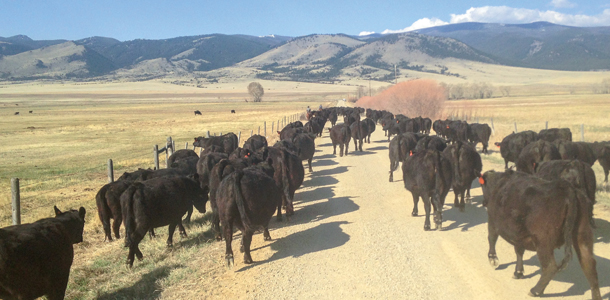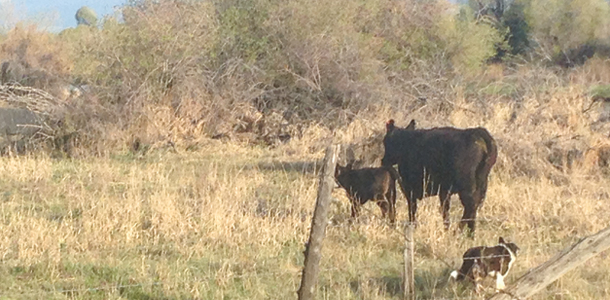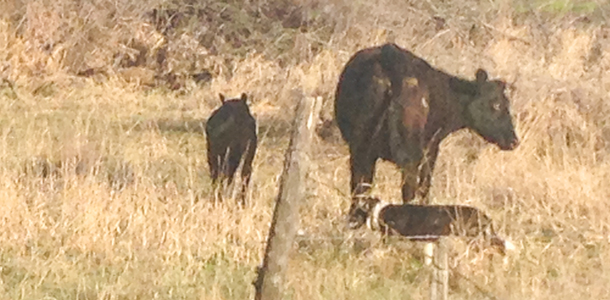Astute cattlemen try to lessen stress on their animals during any handling procedure, trailing them from pasture to pasture or restraining them for processing. Stress is known to reduce performance of cattle in gain and reproduction.
Likely, cattlemen knew this long before it was “proven by science.”
We harp on the need to implement low-stress handling practices in the name of doing the right thing, increasing consumer confidence and beef quality.
Some producers have been reluctant to change as they don’t feel there is a financial benefit at the ranch level. A harder look at science indicates evidence of financial benefits to implementing low-stress methods of handling livestock at all levels of the industry.
Increased levels of stress hormones decrease gains, reproduction and also immune function. Every segment of the industry has a financial benefit to reap by maximizing these performance measures.
To discuss these chemical processes is a surefire cure for insomnia, so I will forgo the agony of chemical equations. To summarize: High-headed or stressed cattle produce higher levels of stress hormones resulting in decreased appetite, lower cycling activity, decreased cellular immune response and compromising the gut’s ability to clear pathogenic invasions.
When these three performance measures are added to the cost of broken equipment, fences, horses, dogs and people that stressed cattle can cause, evidence mounts of financial benefits to low-stress methods of cattle handling.
Rooting out the cause

To decrease stress in cattle, we need to identify the causes. Some cattle are naturally more temperamental than others. The feeding sector has long been trying to cull genetics for temperamental animals as their performance is lower and they also adversely affect their entire pen.
Often overlooked, however, are animals that are not genetically predisposed to being temperamental. How many times have we encountered animals made that way by life experiences? I have heard many ranchers say that really young cattle don’t remember anything, and therefore it’s not as critical in the really young animals to handle them well.
There has actually been some research that would indicate calves as young as 21 to 24 days old can be temperament-scored.
There is also a myth that if animals don’t struggle when restrained, they are not stressed. Zoologists have conducted studies with prey species that “play opossum” or lie there and act dead when attacked by lions. At the point of attack, scientists have determined that a fear mechanism overpowers the prey animal, and they become completely listless and unable to move or even vocalize.
As they are tossed and thrown about by the lion, they appear to be lifeless. Their theory is that the lion will perceive them as having already been dead and therefore will not eat them to avoid sickness.
In many cases, scientists have observed wildebeests being dropped by lions and then running away by employing this tactic.
How often have we had calves lie completely listless on the ground (or stand in the table refusing to move) after processing and had to encourage them to get up? When they do, they escape quickly; could this be the same fear response?
Eyeing hidden stress
Some cattle are simply docile and easy to work with, but they are still a prey species, and to them we could be perceived as a predator. We know cattle will hide symptoms of sickness when in the presence of a human.
Ask any good feedlot pen-rider, and they will tell you it’s easier to spot sick cattle farther away before they are alerted to human presence.
Given cattle’s ability to mask stress and sickness, we need to redouble our efforts to handle them with the least stress possible. Why put effort and expense into nutrition and health programs when our handling practices could be a major vector of stress-related sickness?
How do we handle a prey animal and keep their stress hormone production to a minimum? First, we throw the clock away at every opportunity. I realize that when the trucks are coming at 10 a.m., you have to be ready to load at 10 a.m. Hopefully by the time that day comes, you will have had time to train the cattle.

We focus on training crew members, horses and dogs, but fail to realize that when we interact with cattle, we are training them too. Taking the time to calmly and quietly handle our cattle so we are no longer perceived as a threat results in a lower-stress event with each event becoming less stressful and, yes, ultimately faster.
Fewer yet intentional movements that place light but direct pressure, followed by an immediate release of pressure, results in cattle that can be handled quietly and slowly. If done at every opportunity, those days with a set departure time become less stressful to animals and people.
Safe and silent
The importance of being quiet can’t be overstated. Studies have been conducted where cattle’s heartbeats were monitored and cattle were subjected to certain sounds. During this study, it was found that a person’s whistle or shout increased heart rates far more than a loud slamming gate.

Animals can sense our emotions better than we credit them with. If we get stressed and in a hurry, so do they, resulting in increased production of stress hormones.
Every time their stress hormones are elevated, there is a recovery period; during this period, performance and immunity functions are compromised. The higher the stress response, the longer the recovery period.
To create a healthy environment cattle see as safe takes a mindset fully devoted to stockmanship. Instead of forcing cattle through the gate or the chute, we shift to setting up situations so they will learn to go where we need them to with little to no effort required on our part.
Rome was not built in a day, and we can’t expect it to happen overnight. Here are some pointers to take into consideration to get you on your way.
1. Upon receiving new cattle, allow them to flow (do not force them) through your working system without catching them. When they leave the chute, they immediately travel to a pen with feed and water or out to a pasture.
Thus, learning that good things can happen once leaving the chute and avoiding making them chute-sour because their first experience in the chute was bad.
By giving cattle time to find a path through the facility, they will flow faster and with less stress when you process them as they have learned through their own cognitive ability the route to follow. Think it’s too time-consuming? Try it once and see how the cattle process the next time you run them through the facilities.
2. When in the corrals processing cattle, take care to decrease noise. Don’t let excitable people be on the processing crew. Working cattle calls for a very high level of professionalism. Demand that of yourselves and your crew.
3. When gathering cattle on pasture, slowly move in a quarter-circle pattern with the point of desired direction being the middle of the quarter-circle, ignoring lone animals. (They’ll come, trust me.)
This gives mothers a chance to “pair up” with their calves. Pairs trail in a less stressed manner when they start out and remain together throughout the move.
4. Once on the trail, back off. Too often we drive cattle when we should be lightly pressuring them and allowing them to take their own pace.
One way to tell if you are putting too much pressure on them is the “bawl” factor. If cattle are bawling and looking for their calves, you are pushing too hard as the herd has been crowded together to the point that cows have been separated from their calves unless they started already separated (refer back to No. 3).
Cattle should always trail quietly and slowly. Energetic yearlings may trot and run for a bit but should settle into “trail mode” and move at a natural pace.
If cattle are looking back at you instead of the direction you want them moving, you are either too close and they feel pressured or you are too far away and they are wondering what is following them. We don’t want to hide our presence, but we need to back off and let them travel at their pace, not ours.
5. Settling cattle after processing or trailing is one of the most overlooked way to reduce stress, especially when it comes to young calves.
Following a handling event, make sure that every calf is with its mother, has nursed and is comfortably grazing next to mom or bedded down by her side.
Mature cattle should be settled as well. To accomplish this, circle the cattle and turn the lead back in on itself until all the cattle are grazing and facing in many different directions; otherwise, forward momentum still exists.
By turning the herd back into itself and getting the cattle to face multiple directions and waiting to leave them until they are all grazing, you will encourage a feeling of safety and mental comfort in the cattle which reduces stress, better utilizes forage and facilitates greater performance and better immunity. ![]()
Billy Whitehurst is a beef extension specialist for Montana State University.
PHOTO 1: Prior to trailing and after trailing, it is important to take the time to “mother up” and settle the cattle.
PHOTO 2: These cattle are moving along at “cow speed” with the author taking measures to avoid over-pressuring.
PHOTO 3: Notice my trusty canine is “herding” this pair, not chasing. The cow is aware of the dog’s presence but not feeling alarmed or stressed.
PHOTO 4: For purposes of illustration, I gave Dally her favorite command … “Take her!” Once Dally started pushing too hard and invading the comfort zone of this cow, she quit focusing on trailing and turned to face her “attacker,” elevating her stress hormones and inciting the calf to start trotting away, neither of which we want to have happen when avoidable. Photos courtsey of Billy Whitehurst.








